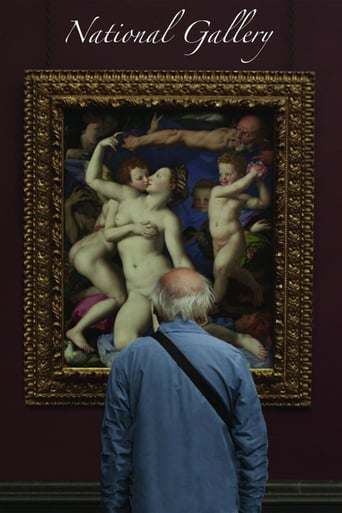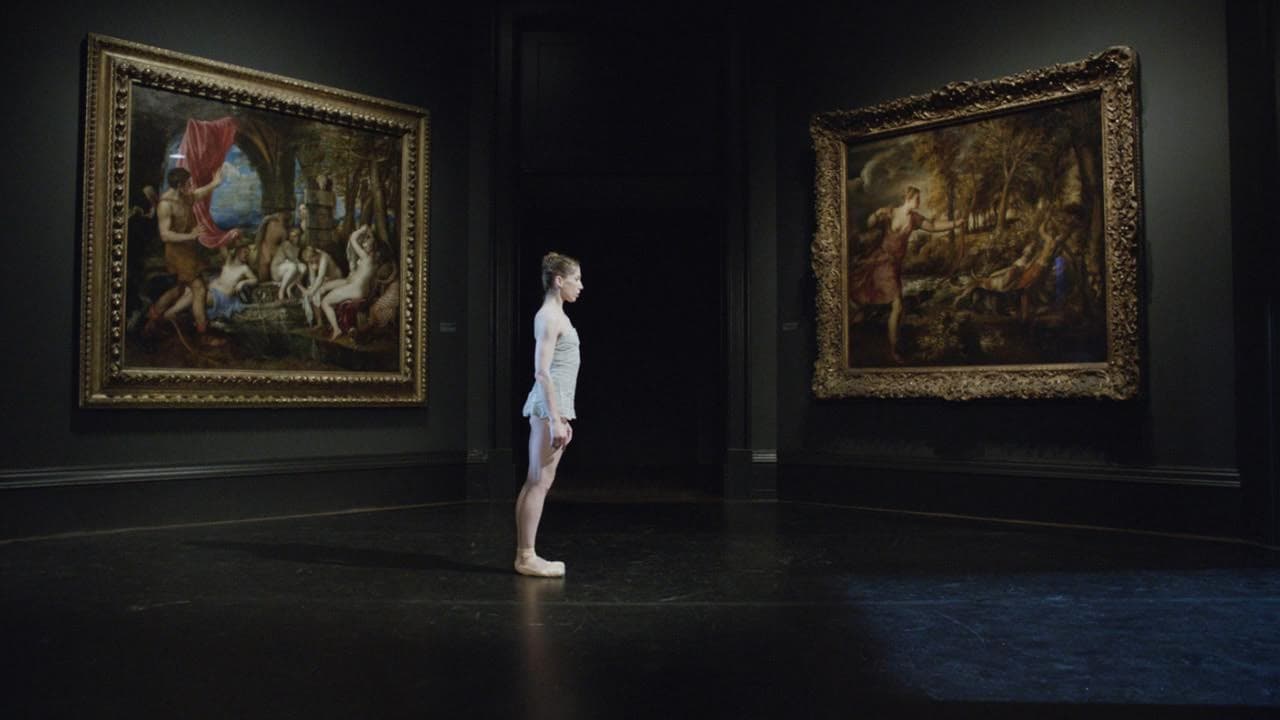Martin Bradley
As observational documentaries go, Frederick Wiseman's "National Gallery" is pretty close to sublime. In typical Wiseman style there's no voice-over and no score; he simply places his cameras and his microphones inside the buildings and lets us see the paintings and hear the words spoken by the staff, at meetings or in discussing the art with the public. It lasts for three hours and if you love great art you just might have an orgasm watching the flow of masterpieces lovingly framed and spoken about. However, if art isn't quite your bag this might be the most boring film ever made.At least Wiseman doesn't do it all in one continuous take, the way Sokurov did with "Russian Ark" whose roving camera induced in me a feeling of seasickness. Wiseman plumps for detail and how. The art is, of course, extraordinary but so too are the faces of the punters who come to stare. The screen itself becomes a canvas in which Wiseman's camera paints the faces of these onlookers and it is beautiful to behold. What's less beautiful are the commentaries of the gallery's guides as they try to 'explain' the paintings to the various tour guides. Love it or loathe it, it isn't like any other film about 'art' that you are likely to see which is some sort of achievement in itself.
marsupial3300
If you are familiar with Wiseman's work, you know that he is a true documentarian. No Michael Moore-type bias, no opinions, just a pure document for you to do with what you will. I enjoyed every minute and learned much about the day-to-day life in London's National Gallery. I loved the staff lectures on different paintings, the restoration sections were fascinating, and even the board meetings were interesting (even though I hate meetings in real life LOL).I'm only sorry Frederick Wiseman is getting older and cannot be with us for another 80 years so he can make even more documentaries. Brilliant, beautiful, sublime
.
graupepillard
Frederick Wiseman's new documentary NATIONAL GALLERY runs three hours; three hours of dissecting and analyzing the workings of one of the world's great Museums - the National Gallery in London England. Probing paintings' meaning and content; structure and design; the decisions involved in the way venerated and treasured works of art are conserved, restored, cleaned, lit and hung. We also are privy to the voices of the docents, curators, and staff talking about specific artworks connecting their audiences to the aesthetics, beauty, history, and science of conservation; the various pathways a painting takes from its original creation; its entry into various collections, and finally to its safe-keeping for posterity in the National Gallery Museum. We even listen to Nicholas Penny, the rumpled-haired Museum Director in a lecture taking a stab at Poussin - admitting that he is not sure if he likes the work, but is always intrigued by it. Questions of elitism and exclusivity vs.accessibility and egalitarianism in light of budgetary considerations are discussed at meetings; there are lots of meetings. The film might have edited out some of the discussions - but I felt that the prosaic, the boring, the everyday-ness was worth observing. The running of a museum is not always glamorous. The decisions that establishments have to make in order to grip the public's interest - what lengths do they go to attract visitors, and at what price to their institution? Wiseman just lets his camera roll; he never uses "voice overs". His working method and vitality at age 84 is unchanged - not intrusive - the filmmaker is always invisible - interviews are conducted by others. Frederick Wiseman lets us be the proverbial "fly on the wall" in a space that ordinarily would be bug-proof.I loved watching one of the restorers discussing the cleaning of Velasquez' Christ in The House of Martha and Mary and passionately ponder the dilemma - do we over-strip the varnish used 100's of years ago and thereby brighten and change the artists' original intent? Ethical problems and compromises come into question. An in-house construction of a triptychs' impressive frame delicately carved by the crafts-men and women associated with the Museum, and the lighting of the finished piece held me spellbound, as did the issue of a cast shadow obscuring the top 1/4 of the painting once the work was installed. We also pay heed to restorers scraping away tiny slivers of paint with scalpels, Q-tips, eye-droppers, etc. and then put the minuscule paint shavings on a slide tray to be placed under a microscope to be scrutinized - to be thoroughly examined yielding a plethora of information; new scientific techniques today make this kind of investigation possible. We mark the fragility of time's passing on art realizing that there are effects that you have to live with, and guard against, but ultimately methodical and deductive technical intervention will be called upon to "save" the work from aging and deterioration.The camera also takes us outside the Museum with aerial views of Trafalgar Square lit by the grays of daylight to the shimmering of the early darkness -focusing on the diverse community waiting patiently in the cold to to see the Da Vinci exhibition "Painter at the Court of Milan" (2012.) We are never far away from the human response to art - the intensity of the onlooker's gaze, the curiosity, confusion, delight, horror and interior peace that art can inculcate.Other blockbusters such as "Turner Inspired by the light of Claude" and "Metamorphosis: Titian 2012" are exhibitions that we are fortunate to attend and hear curators/docents of varying sizes, ages and accents advocating for art's fascination and magnetism; confronting us with their disparate styles - some humorous, others psychoanalytical - all informative. Each artwork has a presence with an individual history and personal narrative imprinted on its essence - like life itself this movie is thrilling, enigmatic, complex and a singular jewel.
xoxoamore
This was another of Wiseman's great films on institutions. The movie takes us inside the world of the National Gallery in London. The film does everything from show us guide lectures to the general public, specific talks for children, an art history discussion of the painting "Boulevard Montparnasse" specifically for blind people (where they feel raised images of the drawing), and talks about restoration. The main focus of the film is a special exhibition they had about Leonardo da Vinci. There is also a focus on the paintings of Hans Holbein, Poussaint, Turner and Titian. There is a very interesting segment where the restorers focus on a portrait of Rembrant, where an x-ray reveals another painting, at a 90º angle, made on the canvas at an earlier time. Discussions about whether and how to "market" the museum and how to project expenses are also shown. The film also shows a discussion with Wayne MacGregror (resident choreographer of the Royal Ballet) about a dance piece that will be performed in front of the Titian paintings and whether the dancers will need a sprung floor (the one in the museum is on concrete).Finally, the films ends with a short excerpt from this piece, danced by Leanne Benjamin and Ed Watson, in front of the Titian painting. Another excellent film by Wiseman and once you have made it past the 1.5 hour mark, by 3 hours, you feel immersed in the National Gallery world.


 AD
AD

